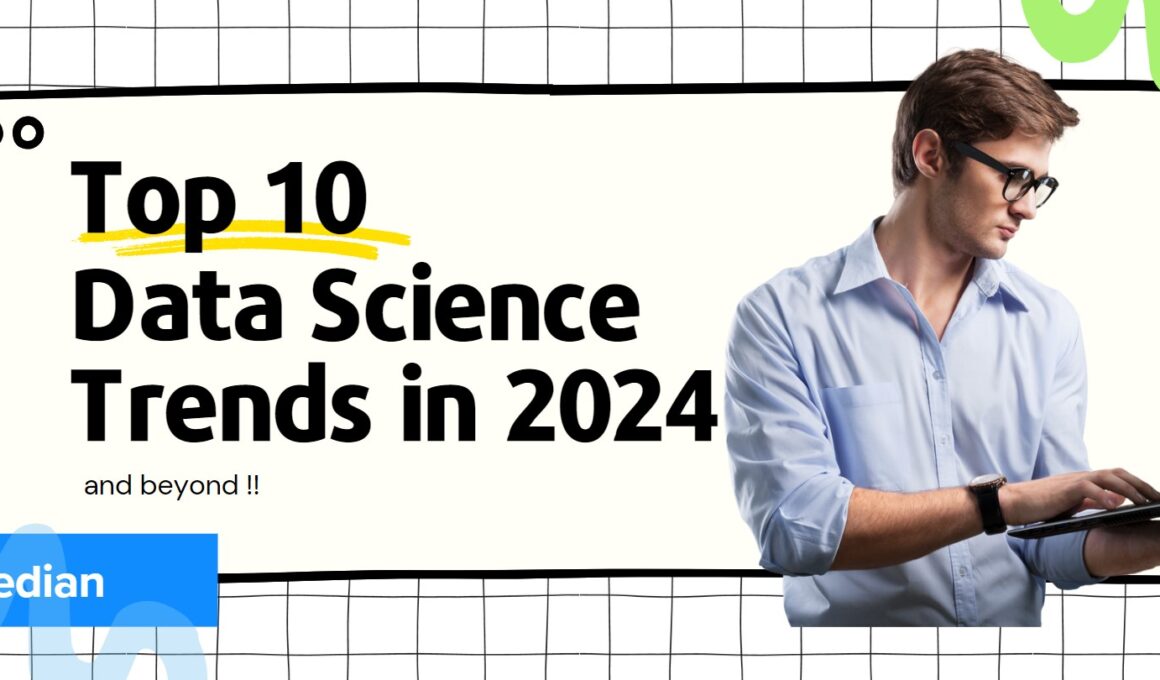In the ever-expanding realm of technology, data science stands as the cornerstone, reshaping industries and redefining the way we understand and engage with data.
As we navigate the complexities of a data-centric market, businesses must remain vigilant and adaptive to the upcoming trends that will define success in the global tech landscape.
For data scientists, staying updated with the latest developments is imperative to effectively handle vast datasets across the globe.
In this exploration, we unveil the Top 10 Data Science Trends that will prove instrumental for professionals and businesses alike in 2023 and beyond.
1. Automation of Big Data Analysis:
Automation has emerged as a transformative force in the world of data, particularly in the realm of big data analytics. Analytic Process Automation (APA) takes center stage, offering insights and predictive capabilities that enhance both efficiency and cost-effectiveness in decision-making processes.
Understanding the role of computing power in decision-making will be crucial for business organizations aiming to optimize their outputs.
2. Augmented Analytics:
Continuing its revolutionary role, augmented analytics integrates AI and Machine Learning protocols to refine algorithms, generating context-aware insights, automating tasks, and facilitating conversational analytics.
This trend is set to become even more effective in rationalizing the growing volume of business data, especially in key industries like defense and transportation.
3. Integration of IoT and Analytics:
The Internet of Things (IoT) is experiencing a phenomenal rise, significantly impacting business activities. The addition of IoT sensors to devices facilitates efficient processing of voluminous datasets, ensuring data transparency—a vital element in corporate governance.
4. (Big) Data Security Analytics:
In response to the escalating challenges of cybercrimes and data breaches, big data security analytics emerges as a critical solution. By collecting, storing, and analyzing large security data in almost real-time, it contributes to efficient detection, managing and addressing cyber threats on a massive scale.
5. NLP-Aided Conversational Analytics:
Conversational analytics, utilizing Natural Language Processing (NLP), will play a pivotal role in processing extensive datasets through voice and/or text. AI-based analytics tools, with the steady progress in NLP, are expected to provide real-time data analysis and responses on a larger scale, enhancing user-friendly interactions.
6. Learning Platforms:
Machine Learning Platforms (MLPs) and Deep Learning Platforms, combining AI and ML, remain crucial as the quantity and variety of business data increase. These platforms leverage intelligent algorithms and massive datasets to offer valuable business insights and innovative solutions, ensuring accuracy in various applications.
7. Robotic Process Automation:
Robotic Process Automation (RPA), as a cutting-edge software technology, is gaining prominence for its ability to emulate human actions with precision and efficiency. Its capacity to carry out error-free tasks at high volume and speed positions it as a valuable tool for industries seeking automation and streamlined processes.
8. AI-as-a-service:
AI-as-a-service (AIaaS) emerges as a convenient option, particularly for small and medium-sized businesses. This third-party service provides advanced AI functionalities through a one-time subscription fee, offering accessibility, cost-effectiveness, transparency, and scalability in crucial areas such as customer service, data analysis, and production automation.
9. Predictive Analytics:
Predictive analytics, a branch of advanced analytics, continues to grow as businesses navigate a surge in data. Utilizing historical data, statistical modeling, data mining techniques, and machine learning, predictive analytics enables firms to identify risks and opportunities across various fields such as weather, healthcare, and scientific research.
10. Cloud Migration:
Cloud migration, the process of moving digital assets to cloud infrastructure, is gaining traction for its ability to achieve real-time performance and efficiency. With its benefits of reinventing offerings and enhancing cost-efficiency, agility, and innovation, an increasing number of companies are opting for cloud migration to drive their business operations forward.
Conclusion
As we stand on the brink of tomorrow, these data science trends provide a roadmap for businesses and professionals alike. Embracing these advancements will not only foster efficiency and innovation but also ensure a competitive edge in the dynamic tech market.
At Accredian, we recognize the significance of staying ahead, and our online programs are designed to equip working professionals with the skills needed to thrive in the evolving landscape of data science. Join us on this transformative journey, and together, let’s unlock the full potential of your career in data science.






